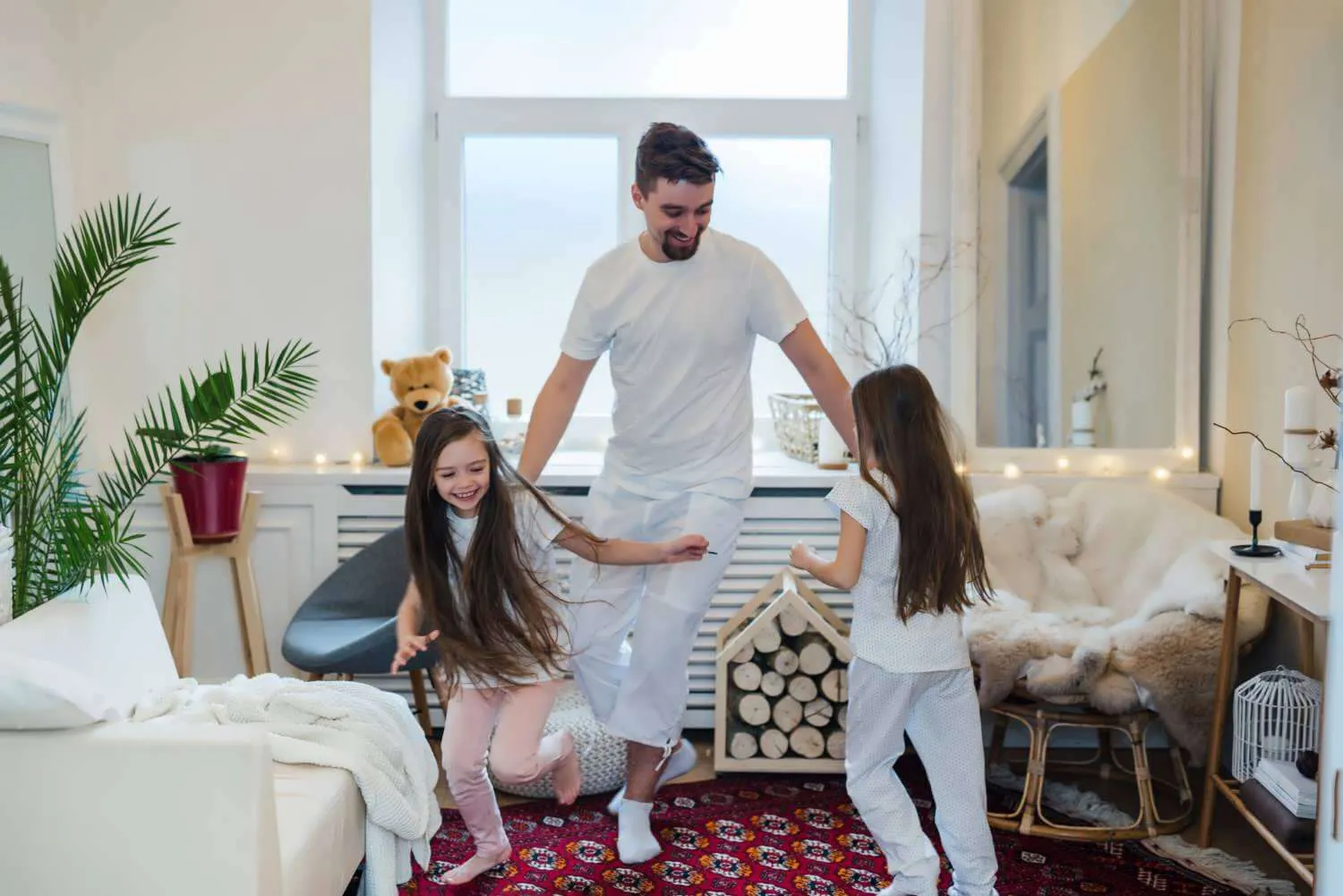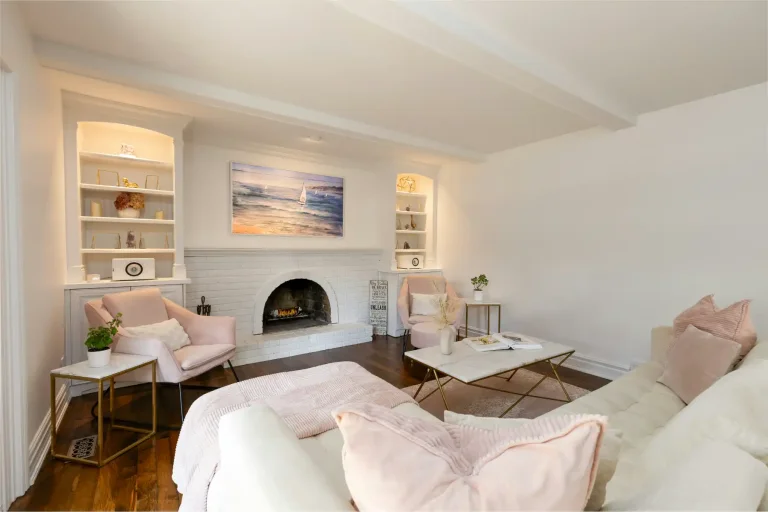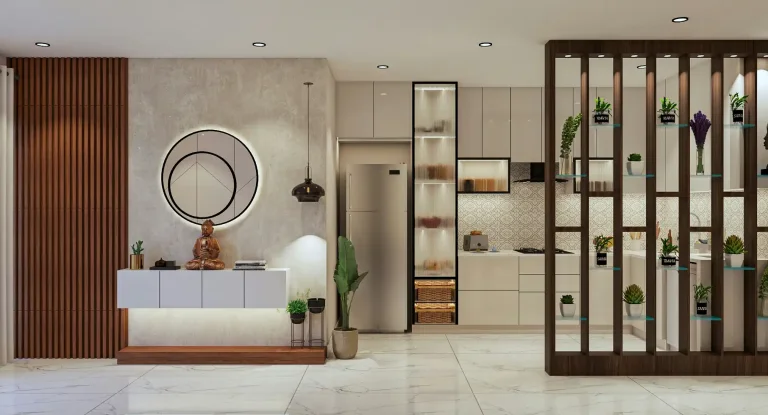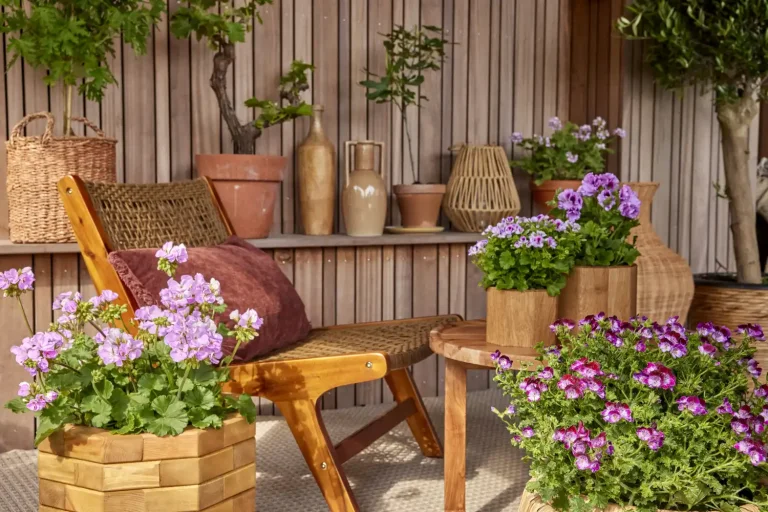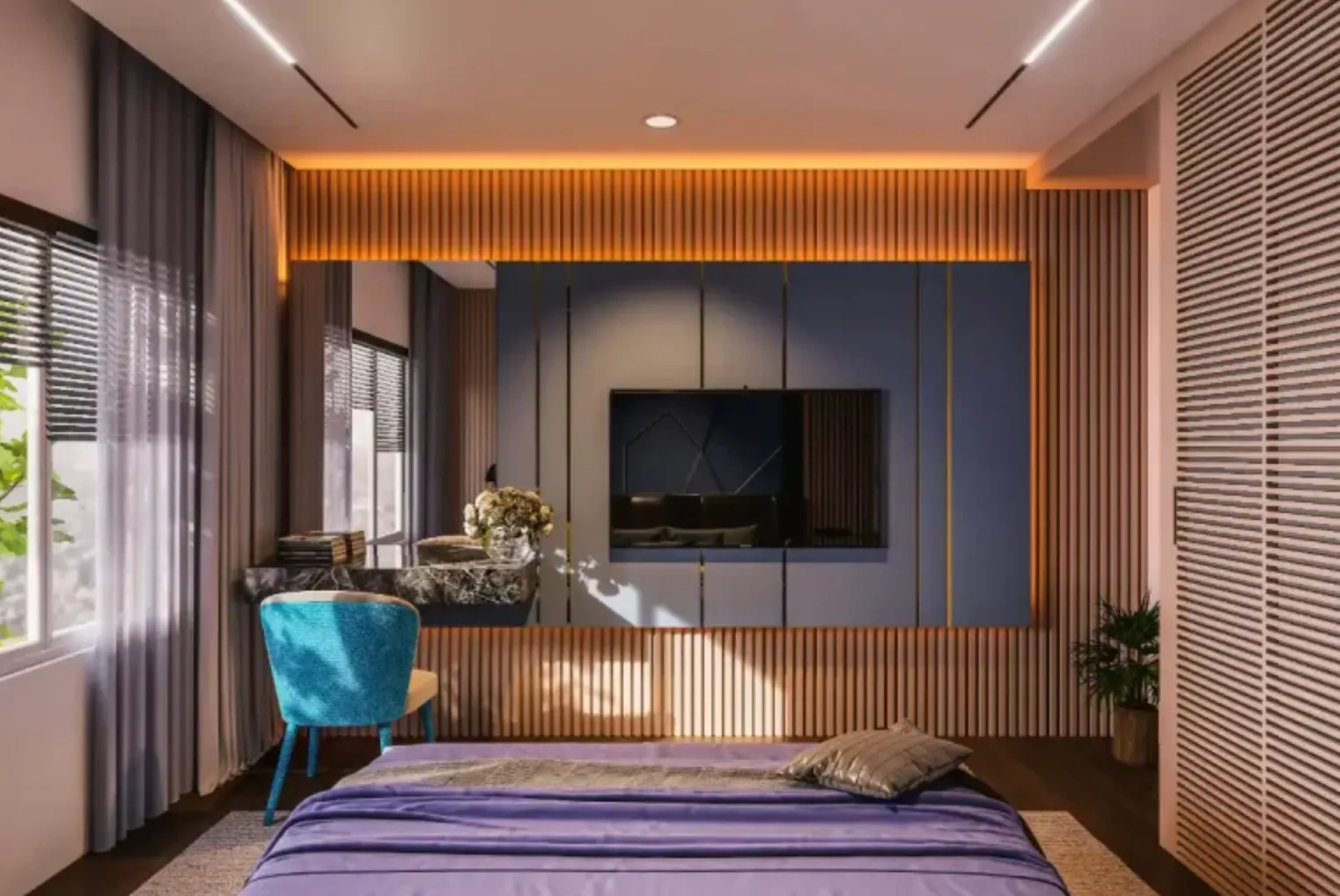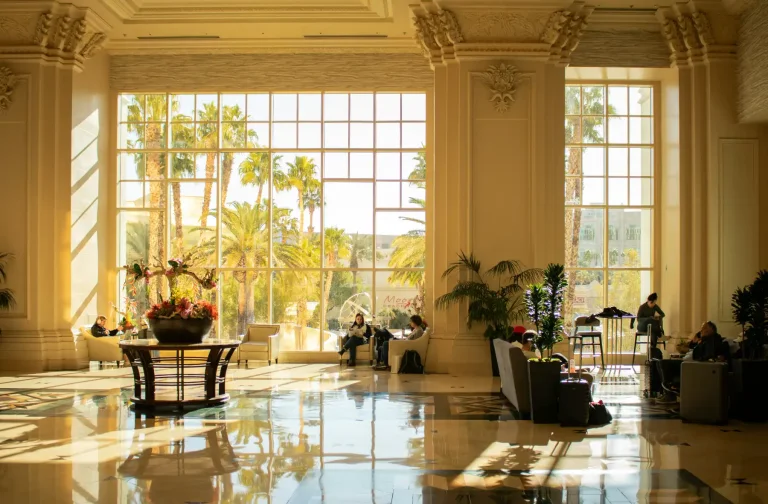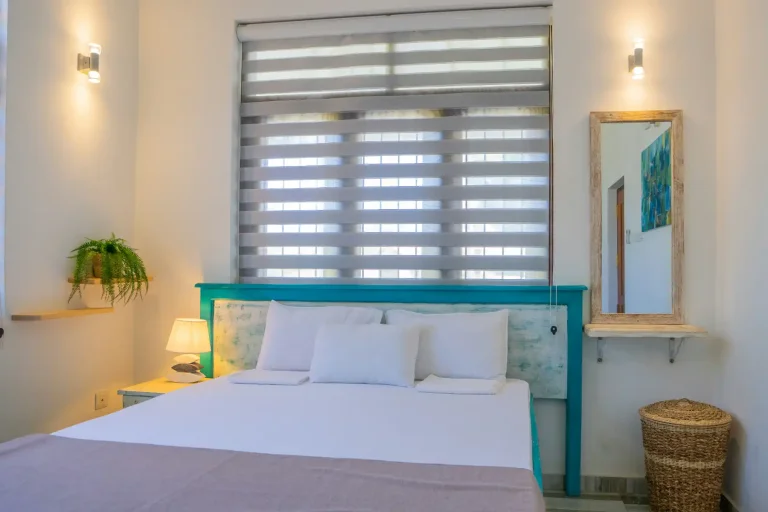Yurt Interior Design: Circular Space Planning & Decor
The humble yurt, once the dwelling of nomadic Central Asian peoples, has transformed in recent years. No longer just a rustic shelter, today's yurts are sought-after luxury escapes, blending simplicity and sophistication that resonate with modern travelers seeking unique experiences.
In the competitive Short-Term Rental (STR) market, yurts have emerged as standout properties that command premium rates and exceptional occupancy. Their distinctive shape and connection to nature create an instant "wow factor" that conventional vacation rentals cannot match.
Yet, this circular design that makes yurts appealing presents unique challenges for yurt interior design. How do you transform an open, circular floor plan into distinct living spaces? Where do you place furniture without corners? How can you create privacy without disrupting the yurt's open structure?
This guide will walk you through circular space planning to decoration, providing actionable steps to create a stunning yurt interior for personal enjoyment or as a top-performing vacation rental. By embracing the circle, you'll discover how to create a space that is functional and extraordinary.
How to Work With Yurt Interior Design
Before exploring design solutions, it's essential to understand why designing a yurt interior differs from working with conventional rectangular spaces. These differences aren't limitations; they're opportunities to create something special.
No Corners, No Problem?
In traditional homes, corners anchor furniture. Sofas, beds, and desks fit into right angles, maximizing space. In a yurt, the absence of corners seems challenging. Where does the bed go? How do you position a desk?
This cornerless design affects our psychological experience of the space. Humans are accustomed to the boundaries that corners provide; they help us mentally organize and navigate our environment. Without them, a yurt can feel more spacious and more difficult to organize.
The curved walls present practical considerations. Standard furniture with flat backs doesn't sit flush against a circular wall, creating awkward gaps or forcing pieces to jut into the living space. Hanging art, installing shelving, or placing tall furniture against the walls requires thoughtful approaches that respect the curve.
The Structure as Decor
One compelling aspect of yurt design is that the structure provides built-in decorative elements. Unlike conventional homes where structural elements are hidden behind drywall, a yurt's architecture is meant to be seen and celebrated.
The lattice walls (khanas) create a geometric pattern that adds visual interest and texture. The roof ribs (uni) radiate from the center, drawing the eye upward and creating a sense of expansiveness. At the center is the compression ring or "tono", the structural keystone and natural focal point.
These elements aren't obstacles; they're distinctive features to highlight in your design. The wooden lattice offers a warm, organic backdrop for your décor, while the soaring ceiling creates a cathedral-like quality that makes a modest-sized yurt feel grand and airy.
A 4-Step Yurt Space Planning
Creating a functional, beautiful yurt interior begins with thoughtful space planning. Follow this approach to transform your circular canvas into distinct, purposeful areas that flow into one another.
Step 1: Define Your Zones with Purposeful Zoning
Zoning is the practice of creating distinct functional areas within an open space without solid walls. This technique is essential in yurt design, where traditional room divisions are impractical or disrupt the architecture.
Map the movement flow through your yurt, starting from the door location. The door location is where all circulation begins and ends. Note where natural light enters, the best views, and the most privacy.
Sketch a basic layout dividing your yurt into functional quadrants. Place the kitchen near the door for easy unloading and access to utilities. Position the living area for the best view and natural light. Tuck the sleeping area into the most private section, ideally furthest from the entrance. If including a bathroom, place it for privacy and practical plumbing.
Movement through a circular space follows the curve. Avoid placing obstacles that force unnatural, zigzagging paths across the yurt’s diameter.
Step 2: Create "Soft" and "Hard" Partitions
Once you've established your zones, you'll need strategies to visually and functionally separate them without disrupting the yurt's open character.
Soft Partitions:
- Area Rugs: A large, round rug defines a living or dining area, creating a visual "room" within the larger space. Layering smaller rugs further delineates reading nooks or meditation corners.
- Furniture Grouping: Arrange seating to create a conversational "room." A sofa with its back to another zone creates a boundary while defining the living area.
- Bookshelves/Screens: Open-back shelving units or decorative screens serve as see-through walls that maintain openness while marking different functional areas.
- Curtains: Ceiling-mounted curtain tracks allow flexible privacy solutions for sleeping areas. When open, they maintain the yurt's spaciousness; when closed, they create cozy, private retreats.
Hard Partitions:
For areas needing more privacy or functional separation, consider partial-height walls (typically 4-5 feet high). These can create a bathroom enclosure, define a kitchen area with a backsplash, or form a half-wall behind a bed. The key is that these walls don't extend to the ceiling, allowing the yurt's distinctive roof structure to remain visually continuous.
Important note: Any built-in elements should be freestanding rather than directly attached to the yurt's flexible outer wall unless engineered for it. Before adding permanent fixtures that affect the building's structural integrity, consult your yurt manufacturer.
Step 3: Anchor the Space with a Central Feature
The area beneath the compression ring is a natural focal point in any yurt. This central spot, often illuminated by a skylight in the tono, deserves special attention in your design plan.
Consider these options for this central space:
- A round dining table creates a gathering place at the heart of the home.
- A central seating area or conversation pit
- A statement light fixture that draws the eye upward.
- A meditation or yoga space, utilizing centered energy
- In larger yurts, a central wood stove or fireplace (with proper venting through the compression ring)
You can leave this central area open, creating a sense of spaciousness and allowing the compression ring and its spokes to take center stage.
Step 4: Plan for Kitchens and Bathrooms
Kitchens and bathrooms pose unique challenges in yurt design due to their need for utilities, ventilation, and more rigid structural elements.
Kitchens:
The most practical kitchen layouts in a yurt are:
- A straight-run galley kitchen along one wall section, following the curve slightly.
- An L-shaped kitchen against a short, straight partition wall.
- A compact kitchen "pod" that contains all essentials in a small, efficient footprint.
When planning your kitchen, consider:
- Proper ventilation is essential. Ensure range hoods vent properly outside.
- Position the kitchen near the yurt’s utility entry to minimize plumbing and electrical runs.
- Choose appropriately sized appliances. Apartment-sized or European models often work well.
- Consider creative storage solutions like hanging pot racks or a central island with storage underneath.
Bathrooms:
The most successful bathroom solutions in yurts typically fall into two categories:
- The "room within a room" approach constructs a fully enclosed bathroom pod inside the yurt.
- A separate structure, either attached to the yurt or nearby (common in rustic setups)
Moisture management is critical for in-yurt bathrooms. Ensure proper ventilation, waterproof all surfaces, and consider a pre-fabricated shower unit to minimize leak risks. If building a custom bathroom, work with contractors experienced in small space solutions and the unique considerations of a circular structure.
How to Furnish Your Yurt
Selecting the right furniture for your yurt is crucial for functionality and aesthetics. The pieces must work with the circular shape while maximizing your space.
Embrace Curves and Modularity
Furniture with curved elements complements a yurt's circular design. Consider:
- Sofas that are curved or semi-circular and echo the outer walls
- Instead of rectangular ones, round or oval dining tables.
- Curved sectional seating that follows the wall's arc
- Barrel chairs or curved-back accent seating
Modular furniture offers excellent flexibility in a yurt. Sectional sofas that can be reconfigured, stacking tables, or nesting stools allow you to adapt your space for different needs. Look for easily moved and rearranged pieces, as this adaptability is valuable in multi-purpose spaces.
Maximize Space with Multi-Functional and Custom Pieces
In small space living, choose multi-purpose furniture:
- Storage ottomans that provide seating, a footrest, and hidden storage
- Daybeds or sleeper sofas that convert from seating to guest beds.
- Dining tables that double as work surfaces
- Expandable nesting tables that tuck away when not in use
- Murphy beds or wall beds that disappear when not in use.
Custom-built furniture works well in a yurt. Consider:
- Built-in curved wall benches with storage drawers underneath
- Custom curved headboards that match the wall
- Built-in desks or workstations that utilize the curve instead of fighting it.
- In taller yurts, loft beds or sleeping platforms create additional usable space below.
The Power of Rugs, Lighting, and Mirrors
These three elements can dramatically transform your yurt interior:
Rugs:
Round, oval, or organically shaped rugs work better than rectangular ones in defining zones within your yurt. Layer rugs of different sizes and textures for visual interest and warmth. Use indoor/outdoor rugs in high-traffic areas for durability.
Lighting:
Develop a layered lighting scheme:
- A statement fixture at the center, hanging from the compression ring.
- Task lighting for functional areas like the kitchen, reading nooks, or workspaces
- Ambient lighting via floor, table, and wall-mounted lamps
- Accent lighting to highlight architectural features or art
- String lights, lanterns, or LED strips for atmosphere and to accentuate the yurt's structure
Mirrors:
Mirrors can make your yurt feel larger and reflect natural light. Consider:
- Instead of mounting one on the curved exterior wall, a large mirror on a partition wall.
- Round or organically shaped mirrors that complement the yurt's circular form
- Smaller grouped mirrors for visual interest
- Mirror placement that reflects the best views or the most attractive interior features
Most Popular Yurt Decoration Ideas
The decoration phase is where your yurt becomes a distinctive, memorable space. This is your opportunity to createInstagram-worthy moments that drive bookings and rave reviews, for those in the glamping design or STR market.
Popular Yurt Design Styles (with Examples)
You can apply any design style to a yurt interior, but certain aesthetics complement the unique architecture:
- Boho-Chic: This free-spirited style suits the yurt's nomadic heritage. Incorporate macramé wall hangings, layered textiles in rich patterns, floor cushions for extra seating, hanging plants, and natural materials like rattan and jute. The casual, eclectic nature of boho style adapts well to the circular space.
- Scandinavian (Scandi): The clean lines and light palette of Scandinavian design contrast with the yurt's wooden structure. Emphasize light wood tones, minimalist furniture with simple silhouettes, a neutral palette of whites and grays, and cozy textural elements like faux fur throws, wool rugs, and linen curtains. The result is bright, airy, and inviting.
- Rustic Luxury: This style embraces the yurt’s natural elements while adding sophisticated touches. Feature leather seating, dark wood accents, a high-quality wood stove, warm lighting from lanterns or iron fixtures, and natural textiles in deep, rich colors. The effect balances wilderness charm with upscale comfort; perfect for luxury glamping.
Walls, Windows, and Textures
Decorating the lattice walls of a yurt requires different approaches than decorating conventional flat walls:
Wall Décor:
- Lightweight textiles like tapestries, macramé, or fabric wall hangings can attach to the lattice without stressing the structure.
- The wooden lattice is decorative; consider leaving sections visible instead of covering every inch.
- For heavier items, install small floating shelves anchored to the lattice at stress points.
- Group smaller decorative objects together for visual impact without large hanging pieces.
Window Treatments:
Standard curtain rods won't work on curved walls. Consider:
- Simple roller blinds, custom-sized
- Tension rods that fit inside each window frame
- Curtain panels hung from the roof ring above windows.
- Apply removable frosted film to lower window sections for privacy without sacrificing light.
Textures:
In a space with many natural elements, textures become especially important:
- Layer different textiles: wool, cotton, linen, silk, for visual and tactile richness.
- Incorporate natural elements like woven baskets, stone, and ceramic pieces.
- Add softness through pillows, throws, and upholstered furniture to balance the wooden structure.
- Consider acoustic textiles that look beautiful and help manage sound in the circular space.
Data-Driven Design for a Profitable Yurt
Creating a beautiful personal yurt is rewarding, but designing a high-performing Short-Term Rental requires a different strategy. Professional expertise is invaluable.
STR Cribs, founded by Joshua Lewis in 2020, has emerged as the first and leading expert in designing high-performing vacation rentals. Unlike traditional interior designers focused on aesthetics, STR Cribs employs a data-driven design approach that analyzes market trends, guest preferences, and booking patterns to inform every design decision.
What does this mean for your yurt rental? Instead of guesswork, STR Cribs might discover that guests searching for unique properties like yurts are willing to pay a premium for luxury bathrooms, outdoor fire pits, and Instagram-worthy bedrooms, but care less about elaborate kitchens. This intelligence allows you to invest your budget where it will generate the highest return.
The results speak for themselves. After implementing their strategic design plans, STR Cribs clients saw up to a 64% increase in occupancy, 40% higher average daily rates, and an average of $50,000 more in annual revenue. For unique properties like yurts, which already attract attention, this data-informed approach can maximize your rental revenue further.
STR Cribs handles everything from concept to completion, making it a turnkey solution for investors entering the yurt rental market, with nationwide service (excluding Hawaii and Alaska). Their team understands the challenges of circular spaces and has experience creating stunning interiors for yurts and other distinctive STRs across the country.
STR Cribs offers financing up to $100,000 for furnishing, making a high-earning yurt more accessible. This means you can create a premium guest experience without depleting your capital reserves, allowing the property to start generating revenue while paying for its own furnishings.
Conclusion
A successful yurt interior design embraces the unique circular architecture. You can transform a simple round structure into a functional, beautiful living space or an exceptional vacation rental through thoughtful zoning, clever use of partitions, strategic furniture selection, and cohesive decoration.
The circle is humanity's oldest architectural form, representing wholeness, unity, and harmony. A well-designed yurt offers not just shelter but a deeper experience, one that today's experience-seeking travelers are willing to pay a premium for.
